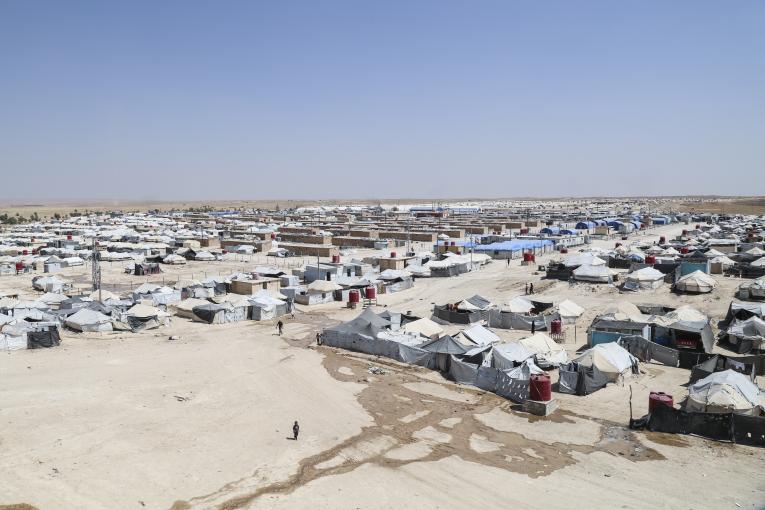Entering Al-Hol camp located in Syria, also known as “the hellhole” by some activists, after being forced to stop at multiple entry and exit checkpoints, which can take a total of more than two or three hours is quite the experience. Whilst driving there alongside a fence, your car may be hit by stones, often thrown by children inside the camp who use them to fill the deadly void, as they often do not attend school.
Few attend schools run by non-governmental organizations, as parents view them with suspicion and as an alternative to teaching methods similar to catechism, where they learn the language, math, and the Quran. “Al- Hol camp” is one of the world’s most famous camps and is run by dozens of international and local non-governmental organizations and is guarded by the Syrian Democratic Forces, which are heavily present in the area, in coordination with international coalition forces fighting against ISIS.
It is located next to the town of Hol, from which it takes its name, and is only 10 kilometres from the Iraqi border. It was first created in the 1990s during the Gulf War to accommodate refugees and was reactivated and prepared to receive Iraqi and Syrian refugees after the wars in Iraq and Syria. The camp, which is home to more than 60,000 people, is characterized by overcrowding and poor living conditions, as it suffers from a lack of basic services such as electricity, water, and sanitation, and a lack of educational and recreational facilities.
The most dangerous thing is the feeling of revenge on the background of religious ideology, and these people are scattered throughout the camp in its eight sectors, but they are mostly in the ninth sector, called Annex, which houses 10,000 women and children, and this section includes children and women from ISIS fighter families.
Black Memory
The Al-Hol camp located in Syria mostly houses women and children, and in, itself this represents a step in the development and development of these children. The cold winter nights where everyone is in their tents for long periods of up to 14 hours, provide women with the opportunity to feed the imagination of children about the reasons for their presence in the camp, which are typically about the killing of their fathers or relatives by the same forces that guard the camp.
Considering that thousands of victims in the camp are from vulnerable groups of women and children, the effectiveness of dormant cells of the organization, which awaken at any time and carry out assassinations, is often from the camp’s residents. These women resort to teaching their children extremist beliefs against anyone who opposes them, in addition to feeding the feelings of hatred and revenge in their hearts against those they believe are responsible for their presence in the camp. The fear and anxiety that these children experience as a result of their mother’s stories, in addition to their living conditions, contribute to the emergence of severe psychological problems that may require treatment in the future.
Image Credit: UNICEF/Al Hol Camp in Syria/2019/Hawas



















